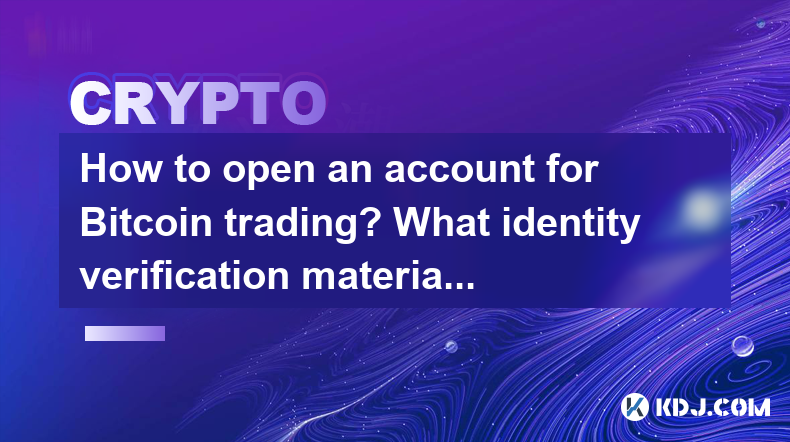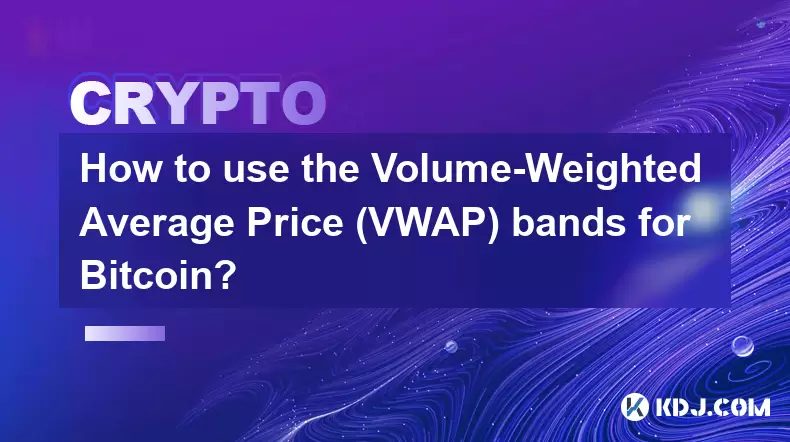-
 Bitcoin
Bitcoin $108,262.4325
-1.40% -
 Ethereum
Ethereum $2,518.2882
-2.94% -
 Tether USDt
Tether USDt $1.0003
-0.01% -
 XRP
XRP $2.2262
-1.71% -
 BNB
BNB $653.9254
-1.55% -
 Solana
Solana $148.1036
-3.11% -
 USDC
USDC $1.0000
0.01% -
 TRON
TRON $0.2829
-1.45% -
 Dogecoin
Dogecoin $0.1639
-4.82% -
 Cardano
Cardano $0.5742
-4.43% -
 Hyperliquid
Hyperliquid $38.9506
-3.95% -
 Sui
Sui $2.9040
-4.34% -
 Bitcoin Cash
Bitcoin Cash $484.8307
-2.62% -
 Chainlink
Chainlink $13.1971
-3.73% -
 UNUS SED LEO
UNUS SED LEO $9.0822
0.51% -
 Avalanche
Avalanche $17.8613
-4.01% -
 Stellar
Stellar $0.2385
-2.26% -
 Toncoin
Toncoin $2.7570
-3.88% -
 Shiba Inu
Shiba Inu $0.0...01145
-3.99% -
 Litecoin
Litecoin $86.9999
-2.43% -
 Hedera
Hedera $0.1538
-3.90% -
 Monero
Monero $313.7554
-2.03% -
 Polkadot
Polkadot $3.3681
-5.08% -
 Dai
Dai $1.0000
0.00% -
 Ethena USDe
Ethena USDe $1.0001
-0.01% -
 Bitget Token
Bitget Token $4.4401
-2.97% -
 Uniswap
Uniswap $6.9644
-8.41% -
 Pepe
Pepe $0.0...09666
-4.79% -
 Aave
Aave $266.5686
-5.04% -
 Pi
Pi $0.4713
-4.95%
How to open an account for Bitcoin trading? What identity verification materials do I need to prepare?
To trade Bitcoin, choose a reputable exchange like Coinbase or Binance, register with your details, and complete KYC verification with ID and address proof.
Apr 30, 2025 at 12:56 am

Opening an account for Bitcoin trading is a straightforward process that allows you to enter the world of cryptocurrency. To begin, you will need to choose a reputable cryptocurrency exchange that supports Bitcoin trading. Some popular exchanges include Coinbase, Binance, and Kraken. Once you have selected an exchange, you will need to complete the account registration and identity verification process. This article will guide you through the steps to open an account and detail the identity verification materials you need to prepare.
Choosing a Cryptocurrency Exchange
Before you can open an account for Bitcoin trading, you must first select a suitable cryptocurrency exchange. Different exchanges offer varying features, fees, and levels of security. When choosing an exchange, consider factors such as user interface, available trading pairs, transaction fees, and customer support. Researching user reviews and security audits can also help you make an informed decision. Once you have identified an exchange that meets your needs, proceed to the registration process.
Registering for an Account
To register for an account on a cryptocurrency exchange, you will typically need to provide some basic personal information. This usually includes your full name, email address, and a strong password. Here are the steps to register for an account:
- Visit the official website of the chosen cryptocurrency exchange.
- Click on the "Sign Up" or "Register" button, usually located at the top right corner of the homepage.
- Fill out the registration form with your full name, email address, and a strong password.
- Agree to the terms of service and privacy policy.
- Submit the registration form and check your email for a confirmation link.
- Click on the confirmation link to verify your email address and activate your account.
Completing Identity Verification
After registering for an account, you will need to complete the identity verification process, known as Know Your Customer (KYC) verification. KYC is a mandatory step to comply with anti-money laundering (AML) regulations and to enhance the security of your account. The verification process typically involves submitting certain identity verification materials. Here's what you need to prepare:
- Government-issued photo ID: This can be a passport, driver's license, or national ID card. Ensure that the document is valid and not expired.
- Proof of address: You will need to provide a document that shows your current address. This can be a utility bill, bank statement, or any official document issued within the last three months.
- Selfie with ID: Some exchanges may require you to take a selfie holding your government-issued ID to verify that you are the rightful owner of the document.
To complete the identity verification process, follow these steps:
- Log in to your newly created account on the exchange.
- Navigate to the "Verification" or "KYC" section of the platform.
- Upload clear and legible copies of your government-issued photo ID, proof of address, and selfie with ID, if required.
- Fill out any additional information requested by the exchange, such as your date of birth or nationality.
- Submit the verification request and wait for the exchange to review your documents.
Waiting for Verification Approval
After submitting your identity verification materials, you will need to wait for the exchange to review and approve your documents. The verification process can take anywhere from a few minutes to several days, depending on the exchange and the volume of verification requests they are processing. You can usually check the status of your verification request within your account dashboard. Once your verification is approved, you will receive a notification, and you can proceed to deposit funds and start trading Bitcoin.
Depositing Funds and Starting to Trade
Once your account is verified, you can deposit funds to start trading Bitcoin. Most exchanges support deposits via bank transfer, credit/debit card, or cryptocurrency. Here's how to deposit funds and begin trading:
- Log in to your verified account on the exchange.
- Navigate to the "Deposit" or "Funds" section of the platform.
- Select your preferred deposit method, such as bank transfer or credit/debit card.
- Follow the on-screen instructions to complete the deposit process. If you are depositing via bank transfer, you may need to provide your bank account details and initiate a transfer to the exchange's provided bank account. If using a credit/debit card, you will need to enter your card details and confirm the transaction.
- Wait for the funds to be credited to your exchange account. This can take a few minutes to several business days, depending on the deposit method.
- Once the funds are available in your account, navigate to the trading section of the platform.
- Select the Bitcoin trading pair you wish to trade, such as BTC/USD or BTC/EUR.
- Place your first trade by specifying the amount of Bitcoin you want to buy or sell and the price at which you want to execute the trade.
Frequently Asked Questions
Q: Can I open multiple accounts on different exchanges to trade Bitcoin?
A: Yes, you can open multiple accounts on different exchanges to trade Bitcoin. However, each exchange will require you to complete their individual KYC verification process. Make sure to comply with the terms of service of each exchange and avoid any actions that may be considered suspicious or fraudulent.
Q: What should I do if my identity verification is rejected by the exchange?
A: If your identity verification is rejected, you will typically receive a notification from the exchange with the reason for the rejection. Common reasons include poor-quality document uploads, expired documents, or discrepancies in the provided information. To resolve this, review the rejection reason, gather the necessary corrected documents, and resubmit your verification request.
Q: Are there any fees associated with opening an account for Bitcoin trading?
A: Most exchanges do not charge a fee for opening an account or completing the identity verification process. However, you may incur fees when depositing funds, trading Bitcoin, or withdrawing funds from your exchange account. Be sure to review the fee structure of the exchange before starting to trade.
Q: Can I use a VPN to open an account for Bitcoin trading?
A: Using a VPN to open an account for Bitcoin trading can be risky and may violate the terms of service of some exchanges. While a VPN can provide an additional layer of privacy, it can also raise red flags during the identity verification process. It is recommended to open an account without using a VPN to avoid potential issues with verification and account security.
Disclaimer:info@kdj.com
The information provided is not trading advice. kdj.com does not assume any responsibility for any investments made based on the information provided in this article. Cryptocurrencies are highly volatile and it is highly recommended that you invest with caution after thorough research!
If you believe that the content used on this website infringes your copyright, please contact us immediately (info@kdj.com) and we will delete it promptly.
- Bitcoin's Pattern Break: Are HODLers the Key to the Next Surge?
- 2025-07-04 18:50:12
- Bitcoin Price, Trump's Bill, and the $150K Dream: A NYC Take
- 2025-07-04 19:50:12
- Ethereum, LILPEPE, and the July Bounce: Will Pepe Steal ETH's Thunder?
- 2025-07-04 19:10:12
- Binance Institutional Loans: Unlocking 4x Leverage and Zero Interest for Whales
- 2025-07-04 19:15:12
- Bitcoin Bull Run: Analysts Eye Peak in Late 2025?
- 2025-07-04 19:20:13
- Pepe Indicators, Bullish Forecast: Can the Meme Coin Rally?
- 2025-07-04 19:25:12
Related knowledge

What is the Woodies CCI indicator and can it be used for Bitcoin?
Jul 04,2025 at 05:14pm
Understanding the Woodies CCI IndicatorThe Woodies CCI indicator is a variation of the traditional Commodity Channel Index (CCI), which was originally developed by Donald Lambert. The standard CCI measures the current price level relative to an average price over a given period, typically 14. However, the Woodies version modifies this calculation to mak...

How to use the Volume-Weighted Average Price (VWAP) bands for Bitcoin?
Jul 04,2025 at 04:28pm
Understanding the Basics of VWAP BandsThe Volume-Weighted Average Price (VWAP) is a key metric used in trading to determine the average price at which an asset, such as Bitcoin, has traded throughout the day. It takes into account both volume and price, making it more reliable than a simple moving average. VWAP bands are essentially standard deviation c...

What is the VWAP indicator and how to use it for Bitcoin?
Jul 04,2025 at 05:28pm
Understanding the VWAP IndicatorThe VWAP (Volume Weighted Average Price) is a technical analysis tool used to determine the average price a cryptocurrency has traded at throughout the day, based on both volume and price. It provides traders with insights into the true average value of an asset by giving more weight to periods where trading volume was hi...

How to read Bitcoin candlestick charts for beginners?
Jul 04,2025 at 11:22am
Understanding the Basics of Candlestick ChartsCandlestick charts are a popular tool used in cryptocurrency trading to analyze price movements. Each candlestick represents a specific time period, such as one minute, five minutes, or even one day. For beginners, understanding how to interpret these charts is crucial for making informed trading decisions. ...

What is the role of Satoshi Nakamoto in Bitcoin?
Jul 04,2025 at 03:14am
Who is Satoshi Nakamoto?Satoshi Nakamoto is the pseudonymous individual or group responsible for creating Bitcoin, the world's first decentralized digital currency. Despite extensive research and speculation, the true identity of Satoshi Nakamoto remains unknown. The name was used in communications related to the development and release of the Bitcoin w...

What is the Bitcoin whitepaper?
Jul 04,2025 at 01:42am
What is the Bitcoin Whitepaper?The Bitcoin whitepaper is a foundational document published in 2008 by an individual or group using the pseudonym Satoshi Nakamoto. Titled 'Bitcoin: A Peer-to-Peer Electronic Cash System', it outlines the theoretical framework and technical specifications for creating a decentralized digital currency. This paper introduced...

What is the Woodies CCI indicator and can it be used for Bitcoin?
Jul 04,2025 at 05:14pm
Understanding the Woodies CCI IndicatorThe Woodies CCI indicator is a variation of the traditional Commodity Channel Index (CCI), which was originally developed by Donald Lambert. The standard CCI measures the current price level relative to an average price over a given period, typically 14. However, the Woodies version modifies this calculation to mak...

How to use the Volume-Weighted Average Price (VWAP) bands for Bitcoin?
Jul 04,2025 at 04:28pm
Understanding the Basics of VWAP BandsThe Volume-Weighted Average Price (VWAP) is a key metric used in trading to determine the average price at which an asset, such as Bitcoin, has traded throughout the day. It takes into account both volume and price, making it more reliable than a simple moving average. VWAP bands are essentially standard deviation c...

What is the VWAP indicator and how to use it for Bitcoin?
Jul 04,2025 at 05:28pm
Understanding the VWAP IndicatorThe VWAP (Volume Weighted Average Price) is a technical analysis tool used to determine the average price a cryptocurrency has traded at throughout the day, based on both volume and price. It provides traders with insights into the true average value of an asset by giving more weight to periods where trading volume was hi...

How to read Bitcoin candlestick charts for beginners?
Jul 04,2025 at 11:22am
Understanding the Basics of Candlestick ChartsCandlestick charts are a popular tool used in cryptocurrency trading to analyze price movements. Each candlestick represents a specific time period, such as one minute, five minutes, or even one day. For beginners, understanding how to interpret these charts is crucial for making informed trading decisions. ...

What is the role of Satoshi Nakamoto in Bitcoin?
Jul 04,2025 at 03:14am
Who is Satoshi Nakamoto?Satoshi Nakamoto is the pseudonymous individual or group responsible for creating Bitcoin, the world's first decentralized digital currency. Despite extensive research and speculation, the true identity of Satoshi Nakamoto remains unknown. The name was used in communications related to the development and release of the Bitcoin w...

What is the Bitcoin whitepaper?
Jul 04,2025 at 01:42am
What is the Bitcoin Whitepaper?The Bitcoin whitepaper is a foundational document published in 2008 by an individual or group using the pseudonym Satoshi Nakamoto. Titled 'Bitcoin: A Peer-to-Peer Electronic Cash System', it outlines the theoretical framework and technical specifications for creating a decentralized digital currency. This paper introduced...
See all articles

























































































